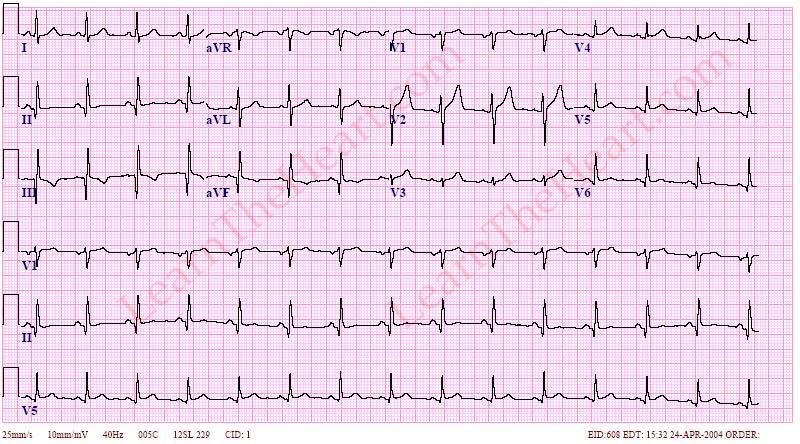What does inferior infarct now present mean?
"Inferior infarct now present" is a medical phrase typically associated with cardiac conditions, specifically myocardial infarction, which is commonly known as a heart attack. Let's break down this term:
Inferior Infarct:
- Inferior: Refers to the lower part of the heart.
- Infarct: Indicates an area of tissue that has died due to lack of blood supply, often caused by a blockage in a coronary artery.
Now Present:
- Indicates that the infarction (tissue death) is currently occurring or has recently occurred.
So, "inferior infarct now present" suggests that there is a recent or ongoing death of tissue in the lower part of the heart due to a compromised blood supply. The term is often used in the context of diagnostic reports, such as electrocardiograms (ECGs or EKGs) or imaging studies, to communicate the location and timing of a myocardial infarction.
It's important to note that this phrase reflects a serious cardiac event, and immediate medical attention and intervention are typically required. Treatment may involve medications, lifestyle changes, and in some cases, procedures such as angioplasty or coronary artery bypass grafting to restore blood flow to the affected area of the heart. The prognosis and recommended treatment can vary depending on the extent of the infarction and the overall health of the individual. It is crucial for individuals who receive such a diagnosis to follow their healthcare provider's guidance and treatment plan.
What does "inferior infarct now present" signify in medical terminology?
In medical terminology, "inferior infarct now present" signifies that a new area of dead tissue (infarct) has developed in the lower part of the heart, specifically the inferior wall.
Here's a breakdown of the phrase:
- Inferior: This refers to the location of the infarct, which is the lower part of the heart. The heart is divided into four chambers: two upper chambers (atria) and two lower chambers (ventricles). The inferior wall is the bottom part of the left ventricle.
- Infarct: This refers to an area of dead tissue, usually caused by a lack of blood flow.
- Now present: This indicates that the infarct is new and was not previously identified.
This finding can be significant and suggests the presence of a heart attack (myocardial infarction). It is essential to interpret this result in the context of a patient's medical history, symptoms, and other diagnostic tests.
Here are some additional details:
- The inferior wall of the heart is supplied by the right coronary artery. An occlusion (blockage) of this artery can lead to an inferior infarct.
- Inferior infarcts are typically associated with less severe symptoms compared to infarcts in other parts of the heart, such as the anterior wall. However, they can still be serious and require prompt medical attention.
- Echocardiography or other imaging tests may be used to confirm the presence and extent of the infarct.
- Treatment for an inferior infarct typically includes medications to manage pain, blood pressure, and heart rhythm. In some cases, surgery may be necessary.
If you receive a medical report with this finding, it is crucial to discuss it with your doctor for further evaluation and treatment options.













